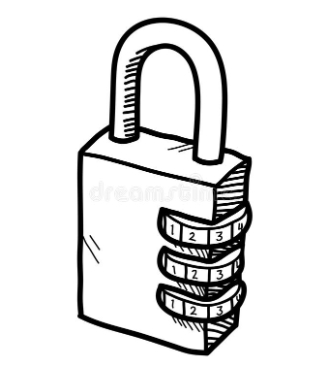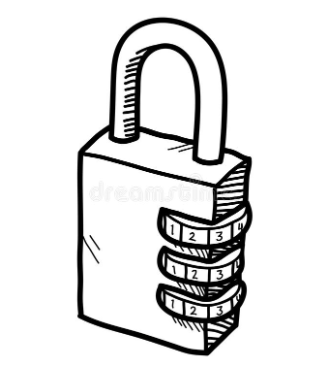“Any sufficiently advanced technology is indistinguishable from magic.”
In today's fast-paced world, technology has become so ingrained in our daily lives that we often take it for granted. We interact with an array of digital devices and applications on a daily basis, with most of their inner workings remaining hidden from us, quietly powering our digital experiences. These under-the-hood technologies operate seamlessly, shaping our interactions without us even realizing their existence.
One such technological wizardry that lurks behind the scenes is hashing, a fundamental concept in computer science and cryptography. While relatively unknown to the general public, hashing plays a vital role in securing our data and maintaining the integrity of digital systems. As we delve into the world of hashing, we will unveil the magic that it brings to our digital lives, ensuring that our virtual interactions remain secure, trustworthy and confirming Arthur C. Clarke's phrase that started this text
Hashing is a process that can be likened to generating a unique fingerprint for data. Just as our fingerprints act as unique identifiers, a hash function produces a fixed-size output for any given input, making it a one-of-a-kind representation for that data. Hashing is widely used in computer security, especially in securing logins and passwords, as it prevents plain-text passwords from being exposed during transmission over the internet.

Let's explore the key features of hashing through various analogies to help better understand this crucial concept in computer science (and for Bitcoin!):
One-way Functionality
An essential feature of hash functions is their one-way nature. This means that it is easy to create a hash from input data but extremely difficult, if not impossible, to reverse-engineer the input from the hash. As an analogy, you can think of a fingerprint. A fingerprint can be derived from a person's finger, but you cannot recreate the person from their fingerprint.
Deterministic Output
Hash functions are deterministic, meaning that given the same input, they will always produce the same output, regardless of the computer or system used. This feature can be compared to a recipe. When following the same recipe with identical ingredients, you will always end up with the same dish.
Sensitive to Input Changes
Even the slightest change in the input data will produce a dramatically different hash output.
An example:
If the input is: Hello, I'm Matheus
The output will be: D7A7DD7CA99320BB0C2FBBA48FD53D24D3D4F65317B950197EDC790198BCEAE4
And if we just remove the comma from the input: Hello I'm Matheus
The output will be:
B929280E3136AEFFCBADFAE60F02276270A3E3F19F171F06F1670D705F68D5E2
Totally different. This shows how it is not possible to discover the input from the output.
Quantum Collision Resistance
The number of possible hash outputs is so vast that the chances of generating the same hash for two different inputs (collision) are astronomically low. To put this into perspective, the number of possible hash outputs is 10^77 and can be compared to the estimated number of atoms in the universe (10^80). This immense variety helps ensure the uniqueness of each hash output.

Easy Verification
Checking if a hash is the correct representation of a given input is a simple process. This can be compared to a password lock. Once you know the correct password, it is easy to verify if it opens the lock. In the same way, hashing allows for easy verification of data integrity without needing to store or transmit the original data.
Hashing in the Bitcoin Protocol
In the context of Bitcoin, hashing is used to maintain the difficulty of mining new blocks. Miners compete to find a specific hash value that meets the required difficulty level, which helps keep the rate of new block creation stable.
Do you still believe that mining blocks on the Bitcoin network is solving an extremely complex mathematical problem?
We hear this explanation almost every day, but the ASICs (Application-specific integrated circuit) that are hardware used for mining are optimized to perform a specific task.
And what specific task is that?
Trial and error!
A good analogy is those padlocks with sequences of numbers. There is no mathematical formula that, if solved, will open the lock. The only way to open it is to discover the sequence of numbers, and for that the only possibility is to try and try (0000, 0001, 0002, and so on).
Once discovered, it is easily verified by others, as well as the Bitcoin network.

What the Bitcoin network algorithm does is indicate an output and miners need to test several inputs until they reach that output (marked by the number of zeros at the beginning of the string).
In other words: trial and error!
The more miners on the network, the more attempts are made, the faster the input is discovered, and consequently the faster the block is mined. In order for the mining time of each block to remain close to 10 min, every two weeks the algorithm adjusts the difficulty (as if it were adding another number to the lock sequence).
Conclusion
Through these analogies, we can gain a better understanding of the fundamental features and importance of hashing in computer science and cybersecurity. By serving as a digital fingerprint for data, hash functions provide a secure way to verify the integrity of information without exposing sensitive details, making them an indispensable tool in modern technology.
Hashing plays a critical role in the Bitcoin protocol, ensuring the security and stability of the decentralized network. As a key component of the mining process, it incentivizes network validators, or miners, to contribute their computational power to maintain the integrity of the blockchain.
Furthermore, hashing ensures data integrity within the blockchain by linking each block to its predecessor through their respective hash values. This creates an immutable chain, which would become instantly invalidated if any data were tampered with.
Overall, hashing is an indispensable element of the Bitcoin protocol, driving the network's security, transparency, and resilience. By incentivizing network validators to prioritize the system's well-being and discouraging dishonest behavior, hashing helps maintain the robustness and credibility of the Bitcoin network, making it an essential tool in the world of digital currencies.
[PT] DeTalks8 - Hash: A impressão digital dos Dados
"Qualquer tecnologia suficientemente avançada é indistinguível de mágica."
No mundo acelerado de hoje, a tecnologia se tornou tão enraizada em nosso cotidiano que muitas vezes a damos como certa. Interagimos com uma série de dispositivos e aplicações digitais diariamente, sendo que a maioria de seus funcionamentos internos permanecem ocultos para nós, alimentando silenciosamente nossas experiências digitais. Essas tecnologias operam de maneira harmoniosa, moldando nossas interações sem que sequer percebamos sua existência.
Uma dessas maravilhas tecnológicas que se esconde nos bastidores é o hashing, um conceito fundamental em ciência da computação e criptografia. Embora relativamente desconhecido pelo público em geral, o hashing desempenha um papel vital na proteção de nossos dados e na manutenção da integridade dos sistemas digitais. Ao mergulharmos no mundo do hashing, desvendaremos a magia que ele traz para nossas vidas digitais, garantindo que nossas interações virtuais permaneçam seguras, confiáveis e confirmando a frase de Arthur C. Clarke que iniciou este texto.
O hashing é um processo que pode ser comparado à geração de uma impressão digital única para dados. Assim como nossas impressões digitais agem como identificadores únicos, uma função de hash produz um resultado de tamanho fixo para qualquer entrada, tornando-o uma representação única para esses dados. O hashing é amplamente utilizado na segurança da computação, especialmente na proteção de logins e senhas, pois impede que logins e senhas sejam expostas durante a transmissão pela internet.

Vamos explorar as principais características do hashing através de várias analogias para ajudar a entender melhor esse conceito fundamental da ciência da computação (e do Bitcoin!):
Unidirecional
Uma característica essencial das funções de hash é sua natureza unidirecional. Isso significa que é fácil criar um hash a partir de dados de entrada, mas extremamente difícil, senão impossível, reverter o hash para a entrada original. Como analogia, pense numa impressão digital. Uma impressão digital pode ser obtida do dedo de uma pessoa, mas você não pode recriar a pessoa a partir de sua impressão digital.
Determinística
As funções de hash são determinísticas, ou seja, dada a mesma entrada, sempre produzirá a mesma saída, independentemente do computador ou sistema utilizado. Essa característica pode ser comparada a uma receita. Ao seguir a mesma receita com ingredientes idênticos, você sempre obterá o mesmo prato.
Sensível às Mudanças de Entrada
Até a menor alteração nos dados de entrada produzirá uma saída de hash completamente diferente.
Um exemplo:
Se a entrada for: Olá, eu sou o Matheus
A saída será:
BE64A1BC3FD60E6D5BA90E87D5D266F0CC3774780C0E0523377C4E9BA10B2A3B
E se apenas removermos a vírgula da entrada: Olá eu sou o Matheus
A saída será:
387E37939CC59E0279792E27884D7BB8EAE8855403C035F9DECB8D40967ADF56
Totalmente diferente. Isso mostra como não é possível descobrir a entrada a partir da saída.
Resistência a Colisões Quânticas
O número de possíveis saídas de hash é tão vasto que as chances de gerar o mesmo hash para duas entradas diferentes (colisão) são astronomicamente baixas. Para colocar isso em perspectiva, o número de possíveis saídas de hash da função SHA256 (usada no Bitcoin) é de 10^77 e pode ser comparado ao número estimado de átomos no universo (10^80). Essa imensa variedade ajuda a garantir a singularidade de cada saída de hash.

Fácil verificação
Verificar se um hash é a representação correta de uma entrada é um processo simples. Isso pode ser comparado a um cadeado com senha. Uma vez que você sabe a senha correta, é fácil verificar se ela abre o cadeado. Da mesma forma, o hashing permite uma fácil verificação da integridade dos dados sem a necessidade de armazenar ou transmitir os dados originais.
Hashing no Protocolo Bitcoin
No contexto do Bitcoin, o hashing é usado para manter a dificuldade de mineração de novos blocos. Os mineradores competem para encontrar um valor de hash específico que atenda ao nível de dificuldade exigido, o que ajuda a manter estável a taxa de criação de novos blocos.
E você ainda acredita que minerar blocos na rede Bitcoin é resolver um problema matemático extremamente complexo?
Ouvimos essa explicação quase todos os dias, mas os ASICs (Application-specific integrated circuit), que são hardwares usados para mineração, são otimizados para realizar uma tarefa específica.
E qual é essa tarefa específica?
Tentativa e erro!
Uma boa analogia são aqueles cadeados com sequências de números. Não há uma fórmula matemática que, se resolvida, abrirá o cadeado. A única maneira de abri-lo é descobrir a sequência de números e, para isso, a única possibilidade é tentar e tentar (0000, 0001, 0002 e assim por diante).
Uma vez descoberto, é facilmente verificado pelos outros, bem como pela rede Bitcoin.

O que o algoritmo da rede Bitcoin faz é indicar uma saída e os mineradores precisam testar várias entradas até alcançar essa saída (indicada pelo número de zeros no início da sequência).
Em outras palavras: tentativa e erro!
Quanto mais mineradores na rede, mais tentativas são feitas, mais rápido a entrada é descoberta e, consequentemente, mais rápido o bloco é minerado. Para que o tempo de mineração de cada bloco permaneça próximo a 10 minutos, a cada duas semanas o algoritmo ajusta a dificuldade (como se estivesse adicionando outro número à sequência do cadeado).
Conclusão
Por meio dessas analogias, podemos obter uma melhor compreensão das características fundamentais e da importância do hashing na ciência da computação e na cibersegurança. Ao servir como uma impressão digital digital para os dados, as funções de hash fornecem uma maneira segura de verificar a integridade das informações sem expor detalhes sensíveis, tornando-os uma ferramenta indispensável na tecnologia moderna.
O hashing desempenha um papel crítico no protocolo Bitcoin, garantindo a segurança e estabilidade da rede descentralizada. Como componente chave do processo de mineração, ele incentiva os validadores de rede, ou mineradores, a contribuir com seu poder computacional para manter a integridade do blockchain.
Além disso, o hashing garante a integridade dos dados dentro do blockchain ao vincular cada bloco ao seu predecessor por meio de seus respectivos valores de hash. Isso cria uma cadeia imutável, que se tornaria instantaneamente inválida se algum dado fosse adulterado.
No geral, o hashing é um elemento indispensável do protocolo Bitcoin, impulsionando a segurança, transparência e resiliência da rede. Ao incentivar os validadores de rede a priorizar o bem-estar do sistema e desencorajar comportamentos desonestos, o hashing ajuda a manter a robustez e credibilidade da rede Bitcoin, tornando-se uma ferramenta essencial no mundo das moedas digitais.

